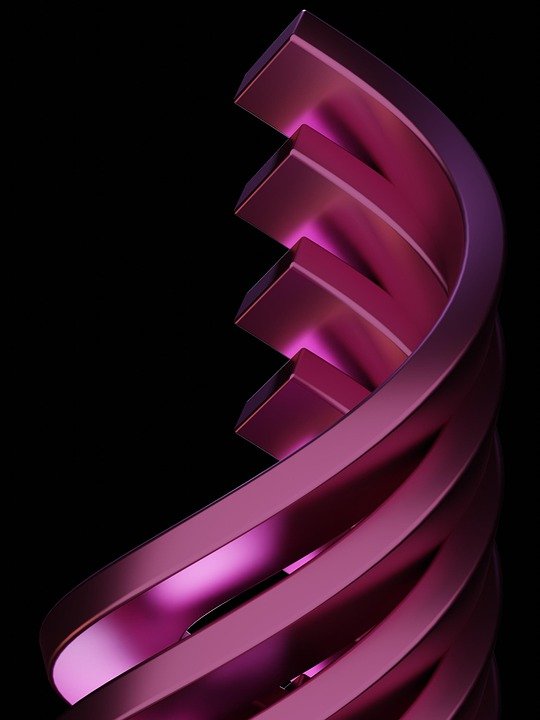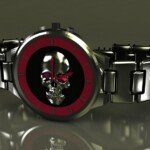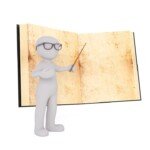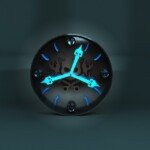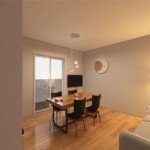Unlocking efficiency: The function of low friction components in engineering
In the complex world of mechanical systems, friction is more than just a small nuisance, it is a powerful opponent. It strips the efficiency system, accelerates wear, generates excessive heat and increases maintenance costs. For decades, engineers have turned to using specialized polymer-based materials to minimize friction "Low friction wire" PLA or nylon injected with PTFE is becoming more and more popular. But what happens when tolerance, thermal stability, or structural robustness are not negotiable? This is Metal 3D printing Enter the spotlight to provide unparalleled solutions for high-performance, low-friction applications. At Greatlight, we specifically convert these advanced material functions into functional reality.
Why is low friction important
Friction is manifested in every moving part – sandwich, bearing rotation, rotation rotation. Its consequences are systematic:
- Energy waste: Up to 30% of mechanical energy can be lost due to friction, thereby increasing operating costs.
- Component degradation: Abrasive wear can shorten part life and cause unplanned downtime.
- Heat accumulation: Excessive friction can raise the temperature and risk material failure.
- Vibration and noise: Poorly managed friction turns into destructive operations.
Although polymer wires effectively reduce friction in low pressure environments, they all walk in high loads, extreme temperatures (common in aerospace or racing) or corrosive environments. This gap drives the need for metal alternatives for minimal friction without compromising strength.
Metal 3D Printing: Redefining Low Friction Engineering
Metal additive manufacturing goes beyond traditional constraints, making it impossible for traditional processing to achieve geometric shapes and material composition. Here’s how we use it as engineers with ultra-low friction components:
1. Advanced Materials Science
Greatlight utilizes optimized metal alloys to reduce friction, such as:
- Bronze Nick Composite Material: Ideally self-lubricating bushings or bearings that disperse friction through embedded lubricant reservoirs.
- Stainless steel with Mos₂ coating: The molybdenum disulfide (MOS₂) layer was constructed after application and used as a solid lubricant, reducing the friction coefficient by more than 50%.
- Tool steel with Tialn coating: The titanium aluminum layer enhances hardness and reduces friction in high-pressure scenarios.
2. Free precision design
Metal 3D printing allows for complex internal lattice structures or porous matrices:
- Retain lubricant: Microchannels and pockets store oil/greases, making for constant, passive lubrication.
- Optimize load distribution: Generate designs minimize peak friction points by dynamically balancing the contact surfaces.
- Integrated features: Combining bearings, seals and structural elements into a single printed section – Reducing assembly friction loss.
3. Surface Engineering Expertise
In addition to material selection, post-treatment is critical. Our features include:
- Completed in a high profile: Reduce surface roughness (RA <0.8 µm) for smoother motion.
- DLC coating (diamond carbon): Add a smooth super hard layer (coefficient of friction: ~0.05), perfect for medical equipment or automotive parts.
- Heat treatment: The annealing process improves the grain structure to resist adhesive wear.
Why choose Greatlime for low friction solutions?
As a leader in metal 3D printing, Greatlight combines state-of-the-art technology with deep materials science expertise:
- Advanced equipment: We use SLM (selective laser melting) and DML (direct metal laser sintering) systems to perform complex high-density parts.
- End-to-end service: From topological optimization to coating applications, we handle design, printing, finishing (polishing, heat treatment) and verification.
- Material versatility: Do copper alloys need thermal conductivity in areas where friction is prone to? Or titanium is for lightweight durability? We quickly customize the alloy formula.
- Speed to the market: Prototypes for a few days; expand production without tool delay.
Real-world applications
Greglight’s low friction parts drive innovation across the industry:
- car: Piston ring with integrated cooling channels, transmission gears and turbocharger blades.
- aerospace: Fuel system components are wear-resistant at 1,000°C+.
- Industrial: Sealed-free pump rotor with lubricant to capture texture, reducing maintenance by 40%.
- Robotics: High-precision joints for matching arms, bastard-free exercise is crucial.
in conclusion
The pursuit of frictionless movement is not just incremental growth, it is revolutionary efficiency. Polymer wires are suitable for light prototypes, but mission-critical applications require the elasticity and adaptability of the metal. At Greatlight, we design metal 3D printed parts that go beyond traditional friction barriers, leverage material innovation, geometric freedom and expert post-processing. Whether you are pushing envelopes in robotics, energy, or aerospace, our solutions ensure durability without compromise.
Ready to convert friction into performance? [Contact GreatLight today] For project consultation without obligations, accuracy can meet the progress.
FAQ
Q1: What makes metals better than polymers for low friction applications?
The polymer softens under heat, chemicals expand, and lacks the mechanical strength of the high loading scheme. Metals retain integrity, support static/dynamic loads and withstand extreme temperatures, which are essential for aerospace, automotive and industrial uses.
Q2: Can metal 3D printing reach the friction level of PTFE?
Yes. Although PTFE has a well-known low friction coefficient (~0.04–0.1), engineered metals achieve similar results through coatings of composite materials (e.g., bronze lubricated alloys <0.08 friction) and DLC (e.g., 0.02-0.2). Crucially, metals have better wear and durability than PTFE.
Q3: How to integrate lubricant into metal parts?
Greatlight uses two methods:
- Dipping: Post-printing, we inject the microporous structure into oil or wax for self-lubricating.
- Solid coatings: The film layer of MOS or graphite is applied to the surface by the PVD/CVD method.
Q4: Will low-friction metal printing damage strength?
not at all. Our 3D printed metal parts have tensile strengths over 1,000 MPa (depending on alloy/heat treatment). Reduced friction strength supplement – partially last longer and perform better.
Question 5: Which industries benefit the most?
Automotive, aerospace, renewable energy (turbo bearing), medical (surgical instruments), semiconductor manufacturing and industrial automation. Wherever there is high wear and friction degradation properties.
Question 6: How does Greatlight ensure partial reliability?
We deployed rigorous testing: over 50 dimension inspections; hardness, wear and friction coefficient measurements for each ASTM standard; metallurgical analysis; and performance modeling – all supported by real-world validation.
For custom low friction solutions that redefine performance, trust:** Design. Print. Perfect. **
